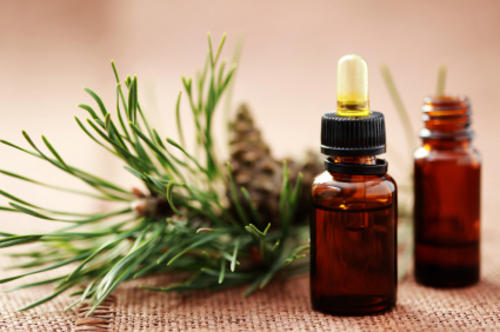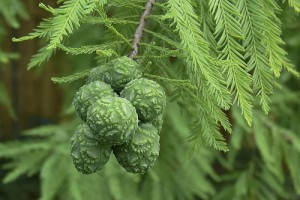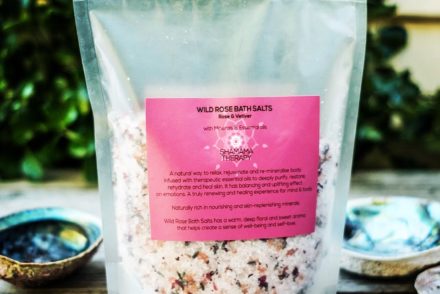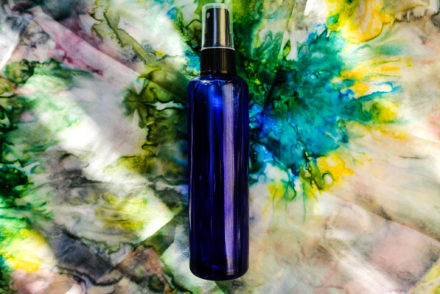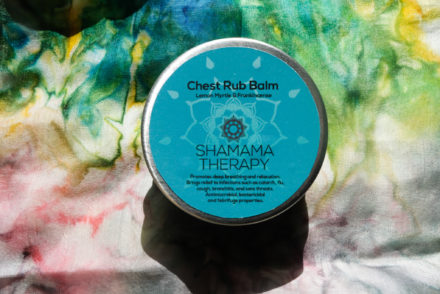“Plants are all chemists,
tirelessly assembling the molecules of the world”
– Gary Snyder, “Introduction”, Pharmako/poeia
“Plants have the ability
To produce an almost endless number
of chemical variations
on a single chemical stracture”
– David Hoffmann, Phytochemistry: Molecular Veriditas
Essential oils are the concentrated essences taken from the flowers, fruit, seeds, leaves, roots, wood and bark of certain plants.
If you have ever enjoyed the smell of a rose, or freshly peeled orange, or a walk by a field of lavender, you have experienced the aromatic qualities of essential oils. They have been described as the ‘hormone’ or ‘life-blood’ of a plant, due to their highly concentrated and essential nature.The essential oils contain a complex assortment of compounds to maintain and restore their own health, attract pollinators and protect them from insects and animals. They are stored in different parts of the plant, being released in varying combinations and strengths as needed. Each essential oil has its own specific health benefits.
Essentials oils are unique and precious substances, described by Malte Hozzel as „carriers of light”. Gabriel Mojay percives them as „massengers of energy and consciousness”. Valerie Ann Worwood believes that essentials oils help us to contact ‘the wisdom of nature, the power of light, the energy of the universe, and thelove in our hearts’.
Essential oils in aromatherapy are used to evoke healing responses in the body rather than attack the symptoms.
The established properties of essential oils
– alterative (blood purifiers) Assist the body’s natural eliminatory response in extreting toxic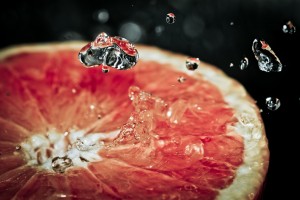 matter such as mucus, faeces, urine, menstrual blood and other toxins.
matter such as mucus, faeces, urine, menstrual blood and other toxins.
Lemon, grapefruit, juniper berry.
– analgesic (anaesthetic)
Peppermint oil has local anaesthetic action. Cold compresses of peppermint oil can be applied to the forehead and temples to relieve headaches and migranes.
Lemongrass, lavender, sweet marjoram, cajeput, clove bud, ginger, chamomile, peppermint, pine, fir, cinamon, eucalyptus, melissa, yarrow, rosemary.
– anti-depressant
Inhalation of the vaporized essential oils derived from chamomile flowers is recommended to relieve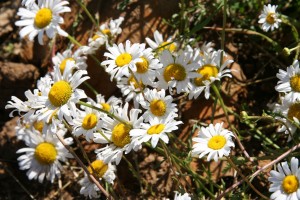 anxiety, general depression. Sclareol, a diterpenol known for its hormone balancing effects, may have a role in Clary Sage’s antidepressant-like properties. After the oil was introduced to the women by inhalation, levels of cortisol (stress hormone) decreased and serotonin (mood and sleep regulator) increased significantly.
anxiety, general depression. Sclareol, a diterpenol known for its hormone balancing effects, may have a role in Clary Sage’s antidepressant-like properties. After the oil was introduced to the women by inhalation, levels of cortisol (stress hormone) decreased and serotonin (mood and sleep regulator) increased significantly.
Bergamot, clary sage, coriander, frankincense , geranium, grapefruit, jasmine, lavender, melissa, neroli, sweet orange, palmarosa, petitgrain, patchouli, rose, sandalwood, ylang ylang, vetiver.
– anti-inflammatory(decreasing swelling and inflammation)
German and roman chamomile, everlasting, yarrow, lavender, patchouli, myrrh.
– antimicrobial: antibacterial, antifungal, antiviral
Bacteria do not develop resistance to plant medicines. Antifungal, antibiotic, or antimicrobial compounds may protect us from invading pathogenic organisms just as the plants protect themselves. Some studies suggest that topical ointments containing lemon balm may help heal cold sores caused by the herpes simplex virus (HSV).
Tea tree, eucalyptus, cinnamon, melissa, lemongrass, lime, bergamot, cedarwood, clary sage, frankincense, lavender, lemon, myrrh, palmarosa, patchouli, peppermint, sandalwood, rosemary, thyme.
“Essential oils are especially valuable as antiseptics, because of their aggression towards microbial germs and their harmlessness to tissue – one of the chief defects of chemical antiseptics is that they are likely to be harmful to the cells of the organisms as to the cause of the disease”
– astringent ( forming and healing action of the tissue)
Cedarwood, cypress, myrrh, frankincense, sage, sandalwood, myrtle, lemongrass, lemon, juniper berry
– carminative (settle and promote digestion, relieve intestinal gas, pain and distention)
Sweet fennel, angelica, coriander, cinnamon, cardamom, black pepper, bergamot, bay laurel, basil, sweet marjoram, thyme.
– choleretic (bile flows more freely)
Black pepper, peppermint, chamomile, rosemary, sage.
– cholagogue (increase in production of bile)
Chamomile, peppermint, sweet orange, mandarin, rosemary, sage, hyssop, angelica
– diaphoretic (induce perspiration)
Studies indicate that inhaling steam with chamomile extract has been helpful in common cold symptoms. Try treating common cold with essential oils that are warming such as ginger, cardamom, cinnamon, clove bud. Fever, sore throats can be helped with cooling essential oils such as peppermint, yarrow, german chamomile, everlasting.
– diuretic (increase the volume of urine exreted)
Juniper berry, geranium, grapefruit, lemon, hyssop, sweet fennel, cypress, angelica, cedarwood, eucalyptus.
– emmenagogue (promote and regulate menstruation)
Angelica has been used for thousands of years to normalize female reproductive problems such as cramping or menstrual irregularities.
Angelica, basil, clary sage, Geman and roman chamomile, cinnamon, jasmine, junipper berry, lavender, myrrh, peppermint, rose, rosemary, sage, yarrow, fennel seed and sweet marjoram.
– expectorant (promote the discharge of phlegm and mucus)
Cedarwood, benzoin, basil, frankincense, cajeput, angelica root, myrrh, ginger, fir, pine, eucaluptus, fennel seed, everlasting, myrtle.
– rubefacient (increase local blood circulation) 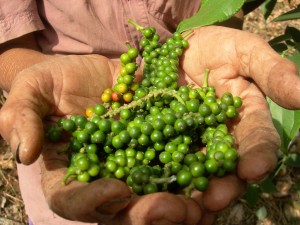
Ginger is a rubefacient and can ease painful conditions such as arthritis, rheumathism or muscle pain and improve poor cirulaton.`If we apply powder of pepper on our skin it get stimulated and become red. The berries are used externally as rubefacient in baldness and skin diseases.
Black pepper, cinnamon, clove bud, ginger, eucalyptus, nutmeg, peppermint, pine, fir, rosemary, thyme, juniper berry, vetiver.
– sedative (relaxing)
It has been shown that during inhalation with lavender, the power of theta and alpha wave activities were significantly increased in all brain regions. Lavender can reduce anxiety and stress.
Camomile, cedarwood, lavender, bergamot, petitgrain, melissa, mandarin, neroli, rose, benzoin, clary sage, jasmine, sweet marjoram, sandalwood, ylang ylang.
– spasmolytic (relieve smooth muscle spasms or digestive, respiratory and reproductive systems)
German chamomile, peppermint, sweet marjoram, basil, eucalyptus, sweet fennel, sweet orange, lemon, neroli, melissa, mandarin, clary sage, angelica.
– vulnerary (wound healing)
Everlasting, frankincense, myrrh, lavender, yarrow, chamomile, benzoin, geranium.
Animals self-medicate with plants
Not only humans have the ability to self-medicate. A wide range of animals self-prescribe the plants around them when they need a remedy.
and add them into their nests to prevent infections and boost the immune system of their young.
– Honey bees seek out propolis to resist infection by a larval fungal parasite.
– Wood ants line their nests with resin to combat bacteria.
– Hoffman (2012) established the chimps in Africa swallow the leaves of Vernonia species that is normally not included in their diet. They use the leaves and stems to scour their intestines and rid themselves of parasites.
– Bears, deer, elk, and various carnivores, as well as great apes, are known to consume medicinal plants apparently to self-medicate.
– Female woolly spider monkeys in Brazil add plants to their diet to increase or decrease their fertility.
– Pregnant elephants in Kenya eat the leaves of some trees to induce delivery.
Modes of action
The essential oils are more then just an aromatic oil. Essential oils have three distinct modes of action with regard to how they inter-relate with the human body: pharmacological, physiological and psychological.
Pharmacological effect is concerned with the chemical changes which take place when an essential oil enters the bloodstream and reacts with the hormones and enzymes etc.
Physiological effect is concerned with the way in which an essential oil affects the systems of the body, whether they are sedated or stimulated etc.
Psychological effect takes place when an essence is inhaled, and an individual responds to its odour.
They are chemicals and molecules, and once they enter our blood stream they travel throughout the whole body and then, ‘invade’ every cell in the body and influence how the cell is going to behave.
Bibliography
Battaglia, S. (2003) The complete guide to aromatherapy 2nd ed The International Centre of Holistic Aromatherapy, Brisbane, Australia
Buhner SH (2002) The lost language of the plants : the ecological importance of plant medicine to life on earth Chelsea Green Publishing, Vermont
McGuffin et al (1997) eds American Herbal Products Association’s botanical safety handbook CRP Press, USA,
Tedx Osaka (2012) Michael Huffman—Animal self-medication. Available at www.youtube.com/watch?v=WNn7b5VHowM. Accessed November 4, 2014.
Schnaubelt K. Aromatherapy and Chronic Viral Infections. Aroma ’93 conference Proceedings Aromatherapy Publications, East Sussex, England, 1994
Sayorwan W, Siripornpanich V, Piriyapunyaporn T, Hongratanaworakit T, Kotchabhakdi N, Ruangrungsi N. The effects of lavender oil inhalation on emotional states, autonomic nervous system, and brain electrical activity. Journal of the Medical Association of Thailand. 2012;95:598–606. [PubMed]
Stewart, David Ph.D. The Chemistry of Essential Oils made Simple p. 414

